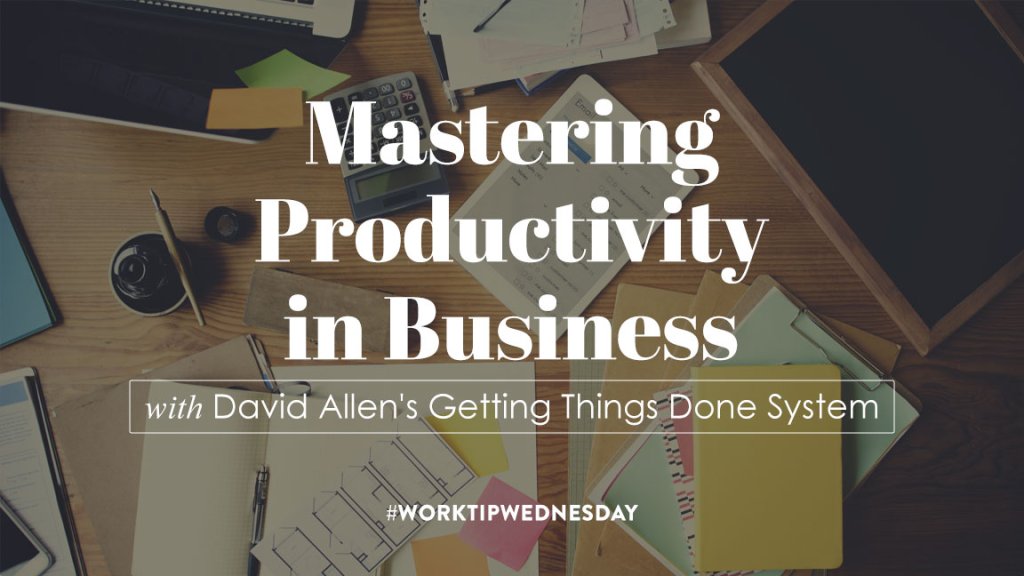
Effective time management and productivity are essential for success. With numerous tasks, deadlines, and projects to juggle, it’s easy to feel overwhelmed. This is where productivity systems like David Allen’s Getting Things Done (GTD) come into play, offering a structured approach to managing tasks and achieving goals efficiently.
What is Getting Things Done (GTD)?
Getting Things Done, often abbreviated as GTD, is a productivity methodology developed by David Allen. At its core, GTD is designed to help individuals organize their tasks, prioritize their work, and ultimately increase productivity. The system is built on the premise that by capturing all tasks and commitments, clarifying their purpose, organizing them systematically, and reviewing them regularly, individuals can achieve a state of “stress-free productivity.”
The Core Principles of GTD:
- Capture: The first step in GTD is to capture all tasks, ideas, and commitments that come to mind. This includes emails and meeting notes to personal errands and project ideas. The goal is to get everything out of your head and into a trusted system for later processing.
- Clarify: Once tasks are captured, they need to be clarified. This involves determining the specific next action required to move each task forward. If a task can be completed in under two minutes, it should be done immediately. Otherwise, it should be delegated, deferred, or placed on a specific list for later action.
- Organize: GTD emphasizes organizing tasks into specific lists or categories based on context, priority, and timeframe. Common lists include “Next Actions” (tasks that require immediate attention), “Waiting For” (tasks that are dependent on others), and “Someday/Maybe” (tasks that aren’t a priority but might be pursued in the future).
- Reflect: Regularly reviewing and reflecting on your tasks and commitments is crucial in GTD. This allows you to ensure that your priorities are aligned, deadlines are met, and nothing falls through the cracks. Weekly reviews are particularly emphasized, where you can review your projects, update your lists, and plan for the week ahead.
- Engage: The final step in GTD is to simply engage and execute your tasks. By having a clear system in place for managing your workload, you can focus on taking action without the mental clutter and distraction of trying to remember everything.
Applying GTD to Business:
Implementing GTD in a business context can significantly improve productivity and efficiency. Here’s how:
- Clear Your Mind: By capturing all tasks and commitments in a trusted system, you free up mental space to focus on the task. This reduces stress and allows you to approach work with a clear mind.
- Prioritize Effectively: GTD helps you clarify your priorities and identify the most critical tasks that require immediate attention. This ensures that you focus your time and energy on activities aligning with your goals and objectives.
- Stay Organized: Organizing tasks into lists based on context, priority, and timeframe makes it easier to manage your workload and stay on track. Whether you’re in the office, attending meetings, or working remotely, you’ll have a clear roadmap of what needs to be done.
- Enhance Collaboration: GTD encourages effective delegation and communication, ensuring tasks are assigned to the right people and progress is tracked accordingly. This fosters collaboration and accountability within teams, leading to better outcomes.
- Maintain Momentum: Regular reviews and reflections help you manage your workload and adapt to changing priorities. You can maintain momentum and avoid procrastination by consistently reviewing your tasks and commitments.
David Allen’s Getting Things Done system provides a comprehensive framework for managing tasks, increasing productivity, and reducing stress in the business world. By implementing GTD principles and practices, individuals and teams can streamline their workflows, prioritize effectively, and achieve their goals with greater efficiency.
